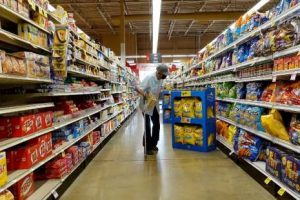Families are struggling to keep up with inflation

Erik Lundh is a principal economist at The Conference Board. The opinions expressed in this commentary are his own.
Last year was a tough one for American consumers. Prices for just about everything, from eggs to used cars to electricity, crept higher, and by the end of the year were up 7% from a year earlier.
Unfortunately, that number went even higher last month, with the Consumer Price Index (CPI) hitting 7.5% year-over-year in January, a 40-year high. But there is good news: This alarmingly high inflation number should begin to drop soon.
When the Omicron variant started to spread, it greatly disrupted the economy as millions of workers called in sick or quarantined. This exacerbated the inflation trends that we saw earlier in 2020. There weren’t enough factory workers to make things, there weren’t enough truck drivers to make deliveries, and there weren’t enough clerks to restock shelves. This created shortages, which in turn jacked up prices on a range of goods, including milk, ham, dishware and even textbooks. I saw this when I went shopping last month. You probably did as well.
Meanwhile, demand for goods held up despite the recent Omicron wave. Recently published retail sales data showed strong consumer spending in January. This was consistent with The Conference Board’s Present Situation Index, which gauges current consumer sentiment. The index showed rising spending intentions for large items, like homes, automobiles and major appliances. This willingness to spend made shortages (and price gains) that much more acute last month.
However, with new Covid-19 cases plummeting, many of these disruptions should start to ease and allow supply to strengthen and better meet demand — meaning more modest inflation. That could make shopping for your summer wardrobe, buying a new grill and loading up on hamburger buns easier to stomach as the weather improves. With fewer people getting sick, there should be more workers in the transportation sector (truckers and dock workers, for instance) — helping to get goods from producers to consumers. Staffing disruptions at factories and on farms should improve as well. Furthermore, as more Americans feel comfortable spending on services, like going to the movies, to theme parks or to local restaurants, some of the elevated demand for goods seen over the course of the pandemic should come down a bit too. This should also help moderate inflation — provided that the service sector can handle the return of these customers.
To be clear, the latest frighteningly high year-over-year inflation reading — the one that always makes headlines — will take some time to reflect these easing disruptions. That’s because this annual number includes all of the month-over-month price gains we’ve seen over the last 12 months. So, it will take time for the math to catch up with the reality. I expect to see the annual inflation number start to tick down when the March CPI data is released.
That said, some goods will indeed remain expensive for quite a while. New car prices, for instance, are unlikely to come down anytime soon. That’s because of a global shortage in semiconductors, which will take some time to solve. Home prices will probably continue to rise as well, though perhaps at a slower rate. That’s largely thanks to both rising demand from aging millennials and chronic underbuilding in the decade following the financial crisis.
The reality is that the pandemic’s impact on supply chains, energy prices, transportation costs and consumer spending patterns will take a year (or longer) to normalize. Additionally, the Federal Reserve’s more hawkish stance on monetary policy will take time to implement and still more time to impact prices. Beyond that, other factors will likely keep inflation from falling back to pre-pandemic rates. Rapidly rising wages associated with labor market tightness, for instance, will be with us for quite some time.
The good news is that consumers can take some solace knowing that large price increases won’t go on forever. The pandemic seems to be easing, and high inflation will, too.
Source: Read Full Article
